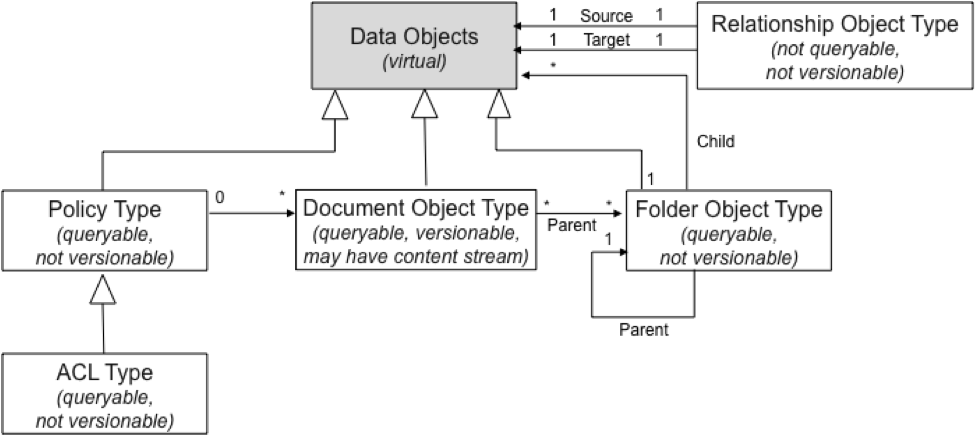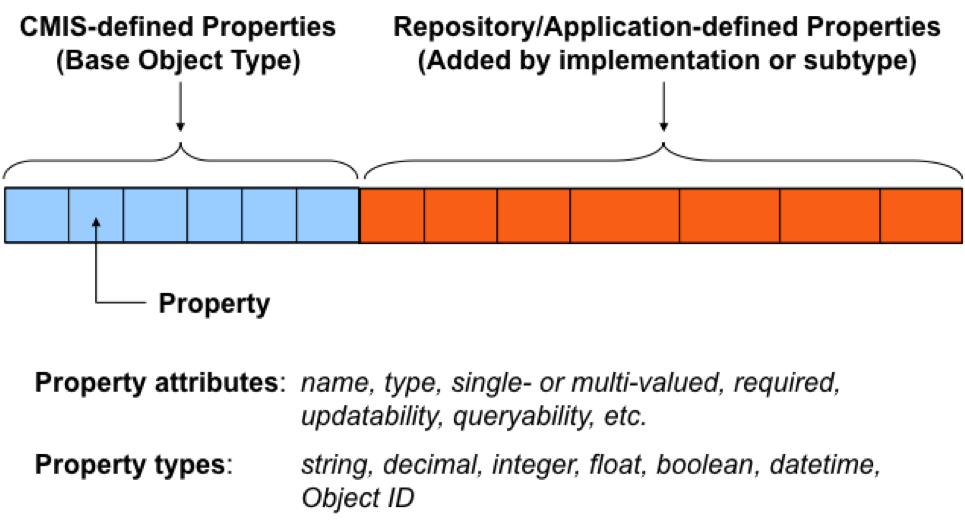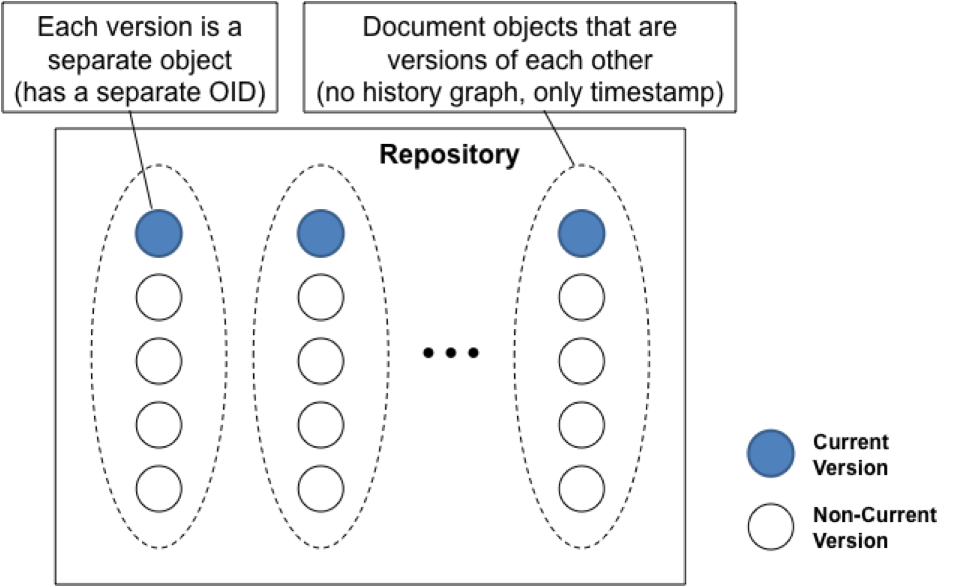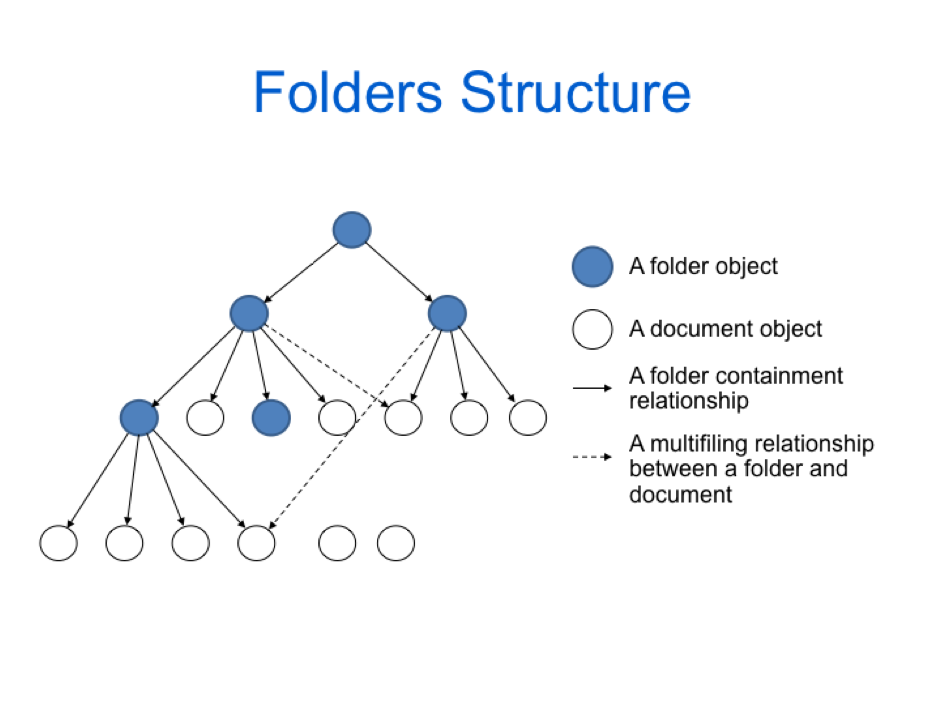CMIS supports object types that define properties associated with each type. Each object has an object type, properties defined by that object type, and an object ID.
Object types support inheritance and are sub-typed as document object types and folder object types. Document object types may have content streams to store and access binary data. Object types may also be related through relationship object types.

CMIS policy object
An Access Control List is a type of policy object. CMIS allows applications to create or apply ACLs. The SkyVault repository also uses policy objects to apply aspects.
CMIS document object
Document objects can also have renditions that represent alternate file types of the document. Only one rendition type, a thumbnail, is well defined.

CMIS versioning
Each version is a separate object with its own object ID. For a given object ID, you can retrieve the specific version, the current version, or all versions of the object, as well as delete specific or all versions of a Document object. Document versions are accessed as a set of Document objects organized on the time stamp of the object. CMIS does not provide a history graph.

CMIS folder object

